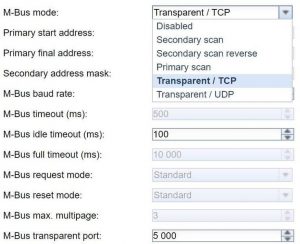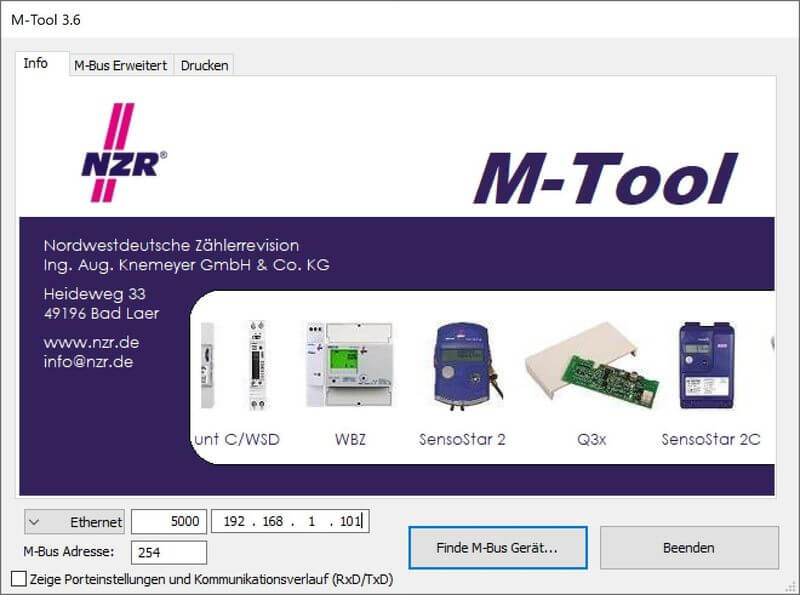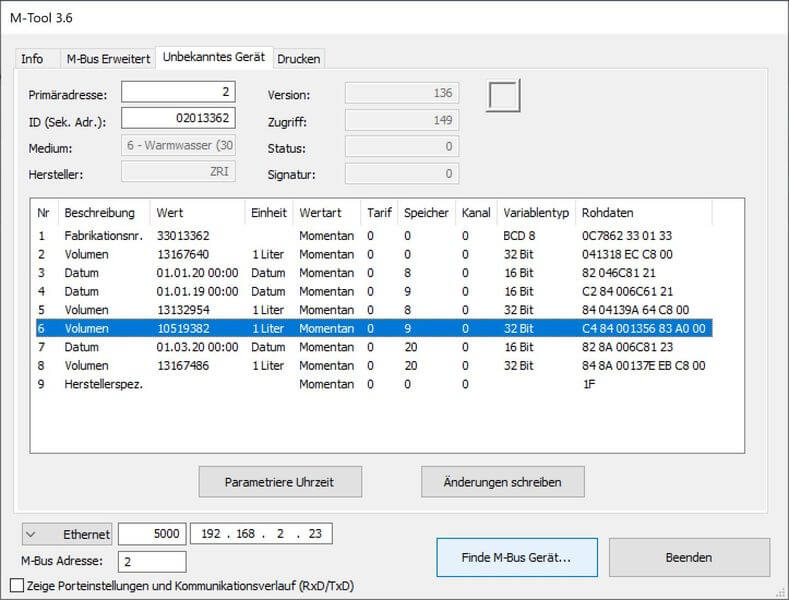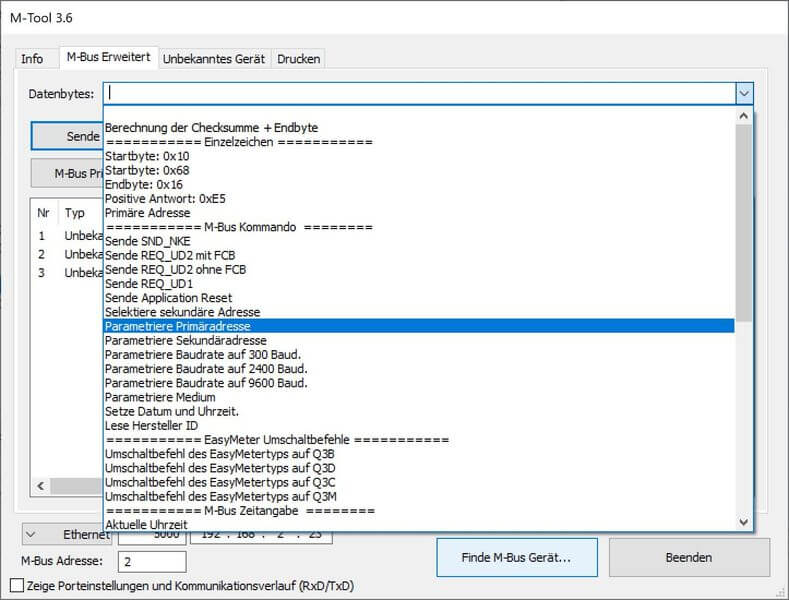Our data concentrators and gateways collect meter data via standard commands. Depending on the device, M-Bus, wM-Bus, RS-232 and/or RS-485 interfaces are available.
Usually, the required data can be read out directly from the meters.
However, in particular applications this is not enough. This may be due to the user of other protocols (e.g. DLMS, Modbus RTU) or special, manufacturer or type-specific commands to meters (e.g. selection of modes, selection of parameter set). How to proceed in those cases?
For such applications we provide a Transparent Mode for all meter interfaces on the device.
What does the Transparent Mode do?
Essentially, the Transparent Mode is a forwarding of a TCP or UDP port to one of the meter interfaces. This means that all data transmitted to the device via TCP/UDP is sent directly to the meter interface. Equally, the data received at the meter interface is forwarded directly to TCP/UDP. This mode is called transparent because the data remains totally unchanged. The data stream is directly passed through without any changes.
This means that our devices are functionally converted to:
- An Ethernet level converter for the M-Bus
- A distributed wM-Bus receiver
- An RS-485 router for Modbus RTU with mobile communication
The variety of applications is huge and depending on the respective requirements. For example, the primary address or baud rate of the meter can be set remotely from the PC.
Two things are required to use the Transparent Mode: the parameterization of the device and the connection of the TCP/UDP port to your software application.
How do I activate the Transparent Mode on our devices?
The parameterization of the device is done intuitively via the web-based configuration interface. In the tab Configuration the mode can be set to “Transparent” for each interface.

The user has the choice between a TCP connection or a UDP connection with its respective advantages and disadvantages.
Another mandatory parameter is the port to be used to provide the connectivity. This can be chosen freely, but standard ports such as HTTP (80), FTP (21), SSH (22), HTTPS (443) or Modbus (502) must be considered. These should not be used.
Depending on the interface, additional parameters such as baud rate, UART bit timing, etc. can be configured. The parameters are clearly named. Our devices are now ready for transparent use.
How to connect your application to the TCP/UDP port?
The most straightforward way is using an application software which offers a direct connection to a TCP/UDP port. Some meter reading tools or manufacturer tools are doing this. In this case you only have to enter the IP of our device and the used port: 192.168.1.101:5000.
The UART parameters, especially the bit timing, are not relevant to be set in the application because they are generated by the device. The only thing that is important for some tools is that the socket connection runs in raw data mode and does not use Telnet data encoding.
What could a practical example look like?
For the parameterization of M-Bus meters via M-Bus we like to use the Tool M-Tool from the company NZR.

Here you can directly enter the IP and the port of our device. If you are searching a meter in this way, the PC will do this logically; our device takes care of the physics like a level converter.

The tool enables various pre-configured or manufacturer-specific commands to be sent to the meter. It is therefore well suited for changing primary addresses, setting times or sending specific commands to meters, as the tool also helps to create the checksum.

If your application software cannot establish a direct TCP/UDP connection, but works via serial interfaces (e.g. COM1), you need a driver for a “Virtual COM port”. This works basically like our configured device, only the other way round. This driver creates a COM port and then forwards the data from the COM port to a TCP/UDP port.
A commercial provider for such a COM port driver is Eltima, but there is also shareware and freeware available.
Access interfaces transparently
PDF | 222 kB


